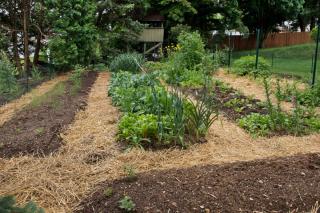

Permaculture is the art of following biological insights gleaned from considering nature as a teacher. Key is the observation of natural exchanges occurring in ecosystems. It usually involves growing plants together on small, densely-populated surfaces. Fundamentally, it ventures much further than pure biology and encompasses all questions searching to understand the relationship between mankind and creation.
It is particularly well suited to vegetable gardens!
The word “permaculture” stems from the two words “permanent agriculture”, which can also be understood as saying “sustainable agriculture”. Building upon organic agriculture, permaculture on a basic level avoids all use of synthetic chemical fertilizers, weed-killers and pesticides. But it goes much further: it aims to empower every single being to strike a harmonious balance between lifestyle and planet.
It is grounded in ethics and a philosophy that hopes to care for both Earth and Humanity, and endeavors to share resources as equitably as can be.

That’s exactly what happens in a natural forest with the layer of humus that covers the ground. Everything is recycled or reused: waste from one plant becomes a resource for another being. For instance, leaves that have fallen off a tree are one of the components of mulch which provides shelter, nutrients, moisture retention and answers the needs of both insects and young saplings.

Sometimes growing beds have been shaped into mounds to ensure that the soil is loose, making it easy for roots to dig down. They resist drought much better, which reduces the watering. Space is maximized because companion plants can be densely paired together: herb plants, edible flowers and vegetables thrive together in the shade of fruit trees.
In a way, companion planting derives from observing natural local ecosystems: plants that naturally help each other out dominate and crowd out those which don’t play along.
Permaculture also tries to save on energy, and the key to this is to capture as much sunlight as can be. Small ponds would be dug out between growing beds, and the sun would bounce off stones layering the bottom to reverberate on nearby leaves. The stones themselves are regulating thermal sink tanks, absorbing heat during hot hours and beaming it back when the air is cold. Secrets that our ancestors would hand over from one generation to the next side along with common sense solutions to prepare a more fertile future.
Make it a habit to just sit down at in the garden at different times to observe what is happening around the garden. You’ll learn a great deal from what you see, and also reap the benefits related to meditating in the garden!